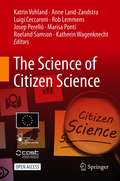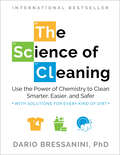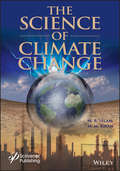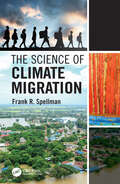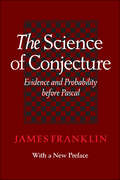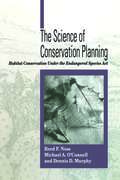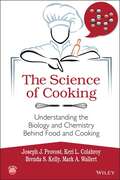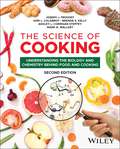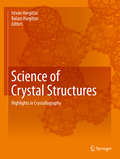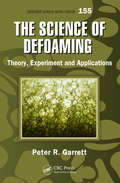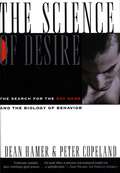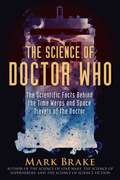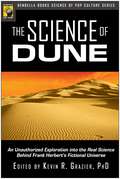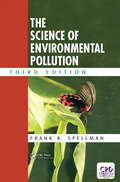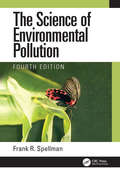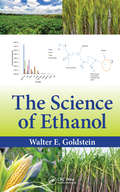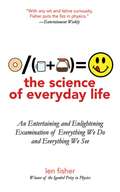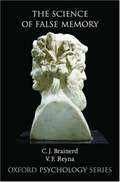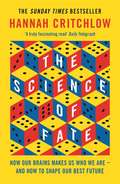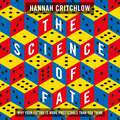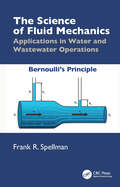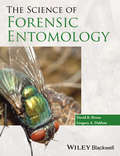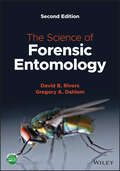- Table View
- List View
The Science of Citizen Science
by Roeland Samson Katrin Vohland Anne Land-Zandstra Luigi Ceccaroni Rob Lemmens Josep Perelló Marisa Ponti Katherin WagenknechtThis open access book discusses how the involvement of citizens into scientific endeavors is expected to contribute to solve the big challenges of our time, such as climate change and the loss of biodiversity, growing inequalities within and between societies, and the sustainability turn. The field of citizen science has been growing in recent decades. Many different stakeholders from scientists to citizens and from policy makers to environmental organisations have been involved in its practice. In addition, many scientists also study citizen science as a research approach and as a way for science and society to interact and collaborate. This book provides a representation of the practices as well as scientific and societal outcomes in different disciplines. It reflects the contribution of citizen science to societal development, education, or innovation and provides and overview of the field of actors as well as on tools and guidelines. It serves as an introduction for anyone who wants to get involved in and learn more about the science of citizen science.
The Science of Cleaning: Use The Power Of Chemistry To Clean Smarter, Easier, And Safer-with Solutions For Every Kind Of Dirt
by Dario BressaniniThe definitive, science-backed guide to cleaning everything in your home in a safe, sustainable, evidence-based way “A great reference for anyone stumped by reluctant-to-leave dirt—and far cheaper than hiring a professional.”—Booklist Countless cleaning hacks for every kind of household dirt may vie for our attention, but how do we know which ones really work and which ones will only leave you with a sticky mess that doesn’t actually do the job? Scientific evidence comes to the rescue, as chemistry professor Dario Bressanini teaches you everything worth knowing about cleaning agents and processes (and dispels plenty of myths, too). He answers all of our most pressing housekeeping questions: Is it more efficient to wash dishes in the sink or in the dishwasher? Does bleach remove dirt? Which cleaning supplies should I buy, and which can I make at home? Can vinegar and baking soda actually unclog your drain? How can I most effectively tackle different types of stains? What can get rid of that stuff on my showerhead? Bressanini covers subjects like these by digging into chemistry basics such as solubility, pH, and concentration, bringing them out of the classroom and into the real-world chores that we deal with every day. Laundry, dishes, sinks, bathtubs, counters, floors, and more—no matter what you’re cleaning, this book explains how to choose the right tools for the task, save yourself unnecessary effort, and stay eco-friendly by avoiding waste. The Science of Cleaning reminds us that science can be both useful and exciting. With Bressanini’s help, you can keep your home, your belongings, and yourself clean—with the confidence that only centuries of advancements in chemistry can provide.
The Science of Climate Change (Wiley-Scrivener)
by M. R. Islam M. M. KhanIt has long been recognized that science is the pursuit of knowledge, knowledge is power, and power is political. However, the fantasy of science being apolitical is a hallmark legacy of the enlightenment era, an era that romanticized pursuit of knowledge, disconnected from the baggage of power, politics, and dogmatic assertions. Yet, while the age of information has exponentially increased our access to knowledge, we can see, as clearly as ever, that scientific knowledge is neither apolitical nor dogma-free, and it certainly is not disconnected from power. It is hard to imagine another era when the separation between science and politics has been this blurred as it is today. At the same time, it is true that no other topic than climate change has been so politically charged, with one side dominating the scientific narration and branding anyone opposing the mainstream as a “climate change denier,” and the other standing in staunch defiance that climate change exists. In an age of political and scientific turmoil, how can we navigate out way to coming towards a more objective understanding of the scientific issues surrounding the climate change debate? This book presents the current debate of climate change as scientifically futile, on both sides of the scientific, and often, political, spectrum. The climate change debate has become like obesity, cancer, diabetes or opioid addiction, which is to say that the debate should not be if these maladies exist, but rather, what causes them. Instead of looking for the cause and making adjustments to remove those causes from our lifestyle, a combination of the capitalist drive towards mass production and a lack of identifying the roots of the problems, new solutions, or substitutes, have been proposed as “quick fixes” to the problems. This book identifies the root causes of climate change and shows that climate change is real and it is also preventable, but that it can be reversed only if we stop introducing pollutants in the ensuing greenhouse gases. The book brings back common sense and grounds scientists to the fundamentals of heat and mass transfer, while at the same time disconnecting politicking and hysteria from true scientific analysis of the phenomenon of global climate.
The Science of Climate Migration
by Frank R. SpellmanThis book addresses the nexus between science and migration and examines how the two are inextricably intertwined. The Science of Climate Migration primarily addresses the science of global climate change and additionally examines how this change is more than a region being too hot, too cold, too dry, too wet, or too windy; rather it is also about heightened military tensions, political instability, and myriad other factors. History has shown that this change is felt most acutely in developing countries that are least equipped to adapt. This inability to adapt is considered to be a driver that motivates local residents to find “greener pastures” through migration. Further, the book discusses the increasing need for the implementation and utilization of non-polluting renewables for use in energy production as a means to stave off environmental crises. Features Examines how and why climate change effects and human migration are inextricably intertwined. Discusses the increasing need for the implementation of non-polluting renewables for use in energy production as a means to stave off environmental crises. Explains how wildlife is also sensitive to shifts in climate and how this in turn affects their migration as well.
The Science of Conjecture: Evidence and Probability before Pascal
by James FranklinHow did we make reliable predictions before Pascal and Fermat's discovery of the mathematics of probability in 1654? What methods in law, science, commerce, philosophy, and logic helped us to get at the truth in cases where certainty was not attainable? In The Science of Conjecture, James Franklin examines how judges, witch inquisitors, and juries evaluated evidence; how scientists weighed reasons for and against scientific theories; and how merchants counted shipwrecks to determine insurance rates.The Science of Conjecture provides a history of rational methods of dealing with uncertainty and explores the coming to consciousness of the human understanding of risk.
The Science of Consequences
by Susan M. SchneiderFeaturing illustrative human, pet, and wild-animal anecdotes, this book is a unique and fascinating introduction to a science that is truly epic in scope. Children quickly learn that actions have consequences. This elementary lesson is repeated again and again throughout adulthood as we adjust our behaviors according to the reactions they produce in the social and natural environment. Now, an internationally recognized biopsychologist, tells the story of how something so deceptively simple can help make sense of so much. Despite their variety, consequences appear to follow a common set of scientific principles and share some similar effects in the brain (specifically, in the so-called pleasure centers). Based on these principles, Schneider and other scientists have been able to create mathematical models of certain behaviors. And they have demonstrated that learning from consequences predictably activates genes and restructures the neural configuration of the brain-in humans as well as in animals. Consequences are an integral part of the nature-and-nurture system. The knowledge gained from this newly expanded science has many applications, as the author shows in examples from the home, the hospital, the classroom, and the boardroom. The science of consequences helps fight prejudice, free addicts of their destructive habits, and treat depression. It enriches the lives of pets and zoo animals. It also sheds light on our biggest societal challenges, where we must choose between short-term and long-term consequences.
The Science of Conservation Planning: Habitat Conservation Under The Endangered Species Act
by Michael O'Connell Reed F. Noss Dennis D. MurphyBroad-scale conservation of habitats is increasingly being recognized as a more effective means of protecting species and landscapes than single-species preservation efforts. While interest in the approach has grown tremendously in recent years, it remains controversial and the science behind it has yet to be fully developed.In The Science of Conservation Planning, three of the nation's leading conservation biologists explore the role of the scientist in the planning process and present a framework and guidelines for applying science to regional habitat-based conservation planning. Chapters consider: history and background of conservation planning efforts criticisms of science in conservation planning principles of conservation biology that apply to conservation planning detailed examination of conservation plans specific recommendations for all parties involved.The recommendations, interpretations, and questions provided are thoroughly based in the science of conservation biology, and the framework presented is adaptable to allow for revision and improvement as knowledge is gained and theories refined. The Science of Conservation Planning will serve as a model for the application of conservation biology to real-life problems, and can lead to the development of scientifically and politically sound plans that are likely to achieve their conservation goals, even in cases where biological and ecological information is limited.The book is essential for scientists at all levels, including agency biologists, academic scientists, environmental consultants, and scientists employed by industry and conservation groups. It is also a valuable resource for elected officials and their staffs, environmentalists, developers, students, and citizen activists involved with the complex and contentious arena of conservation planning.
The Science of Cooking: Understanding the Biology and Chemistry Behind Food and Cooking
by Keri L. Colabroy Joseph J. Provost Mark A. Wallert Brenda S. KellyWritten as a textbook with an online laboratory manual for students and adopting faculties, this work is intended for non-science majors / liberal studies science courses and will cover a range of scientific principles of food, cooking and the science of taste and smell. Chapters include: The Science of Food and Nutrition of Macromolecules; Science of Taste and Smell; Milk, Cream, and Ice Cream, Metabolism and Fermentation; Cheese, Yogurt, and Sour Cream; Browning; Fruits and Vegetables; Meat, Fish, and Eggs; Dough, Cakes, and Pastry; Chilies, Herbs, and Spices; Beer and Wine; and Chocolate, Candy and Other Treats. Each chapters begins with biological, chemical, and /or physical principles underlying food topics, and a discussion of what is happening at the molecular level. This unique approach is unique should be attractive to chemistry, biology or biochemistry departments looking for a new way to bring students into their classroom. There are no pre-requisites for the course and the work is appropriate for all college levels and majors.
The Science of Cooking: Understanding the Biology and Chemistry Behind Food and Cooking
by Joseph J. Provost Keri L. Colabroy Brenda S. Kelly Ashley L. Corrigan Steffey Mark A. WallertPROVIDES A CLEAR AND ACCESSIBLE PATH TO LEARNING KEY SCIENTIFIC CONCEPTS THROUGH THE LENS OF FOOD AND COOKING The Science of Cooking provides an engaging and relatable way to explore the science behind every meal. Designed for both science and non-science majors, this popular textbook breaks down complex, molecular-level processes into easily digestible concepts. More than 30 inquiry-driven activities covering science basics and food-focused topics are supported by a series of experiments that can be conducted in the lab, in the classroom, and at home with minimal equipment. Now in its second edition, The Science of Cooking offers enhanced learning tools throughout, including new end-of-chapter questions, practice problems, and hands-on cooking labs. An entirely new “Science for the Chef” section pairing real-world recipes with scientific explanations is accompanied by new chapters on foundational chemistry and biochemistry that connect theory to practical cooking skills. The Science of Cooking: Is a unique approach to teaching all students core fundamentals of chemistry, biology and biochemistry in a food and cooking context. Provides clear explanations and practical insights to future chefs, dietitians, and scientists alike Includes learning objectives, key concepts and end of chapter questions Contains a new selection of detailed recipes that demonstrate scientific processes Integrates guided-inquiry activities that encourage active learning with structured exercises Features inquiry-based cooking labs that offer experiential learning opportunities to deepen student understanding Includes access to a companion website at http://scienceofcooking.bergbuilds.domains/, for adopting professors with downloadable guided-inquiry activities and laboratories. Connecting classroom learning to real-world cooking, The Science of Cooking: Understanding the Biology and Chemistry Behind Food and Cooking, Second Edition is perfect for undergraduate students in chemistry, biochemistry, biology, food science, and nutrition, as well liberal arts majors taking introductory or general science courses.
Science of Crystal Structures
by Istvan Hargittai Balazs HargittaiA volume which includes entries on quasicrystals, icosahedral packing, other packing considerations, extended structures, data treatment and data mining is presented by luminaries from the crystallography community. Several of the contributions are from the schools of such trend-setting crystallographers as J. Desmond Bernal and Aleksandr I. Kitaigorodskii. Internationally renowned scientists contributed such as Tom L. Blundell, Johann Jacob Burckhardt, John L. Finney, Jenny P. Glusker, Nobel laureate Herbert A. Hauptman, the 2014 Ewald-Prize winner A. Janner, Aminoff-Prize winner Isabella Karle, Nobel laureate Jerome Karle, Buckley-Prize winner Alan L. Mackay, Ewald-Prize winner David Sayre, Vladimir Shevchenko, and J. Fraser Stoddart. A few frontier topics dominate the selected material. Pioneers of the direct methods describe the phase problem and how it was solved, including the mathematical approach and the utilization of experience with gas-phase electron diffraction. The reviews by Herbert Hauptman, Jerome and Isabella Karle, and David Sayre reach to the present day in assessing the possibilities of X-ray crystallography. Another focus topic is the investigation of systems that are outside the so-called classical system of crystals. They include quasicrystals, imperfect and very small crystals, supramolecular species, crystal structures without lattice, clusters, nanomaterials among others. Application of synchrotron and cryoprotection techniques, the free-electron laser flash technique and others are mentioned in addition to X-ray crystallography. The relationship between structural and materials properties are examined and uncovered. The broader topics of the so-called generalized crystallography include polymers, clusters, polydisperse chain assemblies, and giant icosahedral fullerenes. There are some key contributions related to the structural investigation of biological macromolecules.
The Science of Defoaming: Theory, Experiment and Applications
by Peter R. GarrettIn the 20 years since the publication of the author's multi-contributor volume on defoaming, a vast amount of new work has been published and many new insights have been revealed. A cohesive, single-authored book, The Science of Defoaming: Theory, Experiment and Applications provides comprehensive coverage of the topic. It describes the mode of act
Science of Desire: The Gay Gene and the Biology of Behavior
by Dean HamerA compelling behind-the-scenes look at cutting-edge scientific inquiry, as well as a brilliant examination of the ramifications of genetic research, The Science of Desire is a lasting resource in the increasingly significant debate over the role that genetics plays in our lives.In July 1993, a scientific event made front-page news: the discovery that genetics plays a significant role in determining homosexuality. In The Science of Desire, Dean Hamer—the scientist behind the groundbreaking study—tells the inside story of how the discovery was made and what it means, not only for our understanding of sexuality, but for human behavior in general. In this accessible and remarkably clear book, Dean Hamer expands on the account of his history-making research to explore the scientific, social, and ethical issues raised by his findings. Dr. Hamer addresses such tough questions as whether it would be possible or ethical to test in utero for the gay gene; whether genetic manipulation could or should be used to alter a person's sexuality; and how a gay gene could have survived evolution. A compelling behind-the-scenes look at cutting-edge scientific inquiry, as well as a brilliant examination of the ramifications of genetic research, The Science of Desire is a lasting resource in the increasingly significant debate over the role that genetics plays in our lives.
The Science of Doctor Who: The Scientific Facts Behind the Time Warps and Space Travels of the Doctor (The Science of)
by Mark BrakeGeek out over the TARDIS, aliens, alternate timelines, parallel worlds, and all your favorite characters from the Doctor Who Universe!Doctor Who arrived with the Space Age, when the Doctor first began exploring the universe in a time-traveling spaceship. Over half a century since, the Doctor has gone global. Millions of people across this planet enjoy Doctor Who in worldwide simulcast and cinema extravaganzas. Doctor Who has infused our minds and our language and made it much richer.What a fantastic world we inhabit through the Doctor. The program boils over withballsy women, bisexual companions, scientific passion, and a billion weird and wonderful alien worlds beyond our own. The show represents almost sixty years' worth of magical science-fiction storytelling. And Doctor Who is, despite being about a thousands-of-years-old alien with two hearts and a spacetime taxi made of wood, still one of our very best role models of what it is to be human in the twenty-first century.In The Science of Doctor Who, we take a peek under the hood of the TARDIS and explore the science behind questions such as:What does Doctor Who tell us about space travel? Could the TARDIS really be bigger on the inside?In what ways does the Doctor view the end of our world? Is the Doctor right about alternate timelines and parallel worlds?Will intelligent machines ever rule the earth?Is the earth becoming more like Doctor Who's matrix?Is the Doctor a superhero? How do daleks defecate?So welcome to The Science of Doctor Who, where the Doctor steps smoothly in and out of different realities, faces earthly and unearthly threats with innovation and unpredictability, and successfully uses science in the pay of pacifist resistance!
The Science of Dune: An Unauthorized Exploration into the Real Science Behind Frank Herbert's Fictional Universe
by Kevin R. GrazierGet excited for the 2021 Denis Villeneuve Dune film release, starring Timothée Chalamet, with The Science of Dune! Since its original publication in 1965, the Dune series has entranced generations of readers with its complex plotting, fascinating characters, grand scope, and incredible scientific predictions. This guide offers fascinating scientific speculation on topics including quantum physics, biochemistry, ecology, evolution, psychology, technology, and genetics. It scrutinizes Frank Herbert&’s science fiction world by asking questions such as: Is the ecology of Dune realistic? Is it theoretically possible to get information from the future? Could humans really evolve as Herbert suggests? Which of Herbert&’s inventions have already come to life? This companion is a must-have for any fan who wants to revisit the world of Dune and explore it even further.
The Science of Environmental Pollution
by Frank R. SpellmanThis new edition of The Science of Environmental Pollution presents common-sense approaches and practical examples based on scientific principles, models, and observations, but keeps the text lively and understandable for scientists and non-scientists alike. It addresses the important questions regarding environmental pollution: What is it? What is its impact? What are the causes and how can we mitigate them? But more than this, it stimulates new ways to think about the issues and their possible solutions. This third edition has been updated throughout, and contains new information on endocrine disruptors in drinking water, contaminated sediments in surface waters, hydraulic fracturing wastewater, and more. Also, it will include new case studies, examples, and study questions. Environmental issues continue to attract attention at all levels. Some sources say that pollution is the direct cause of climate change; others deny that the possibility even exists. This text sorts through the hyperbole, providing concepts and guidelines that not only aid in understanding the issues, but equip readers with the scientific rationale required to make informed decisions.
The Science of Environmental Pollution
by Frank R. SpellmanThis new edition of The Science of Environmental Pollution presents common-sense approaches and practical examples based on scientific principles, models, and observations, but keeps the text lively and understandable for scientists and non-scientists alike. It addresses the important questions regarding environmental pollution: What is it? What is its impact? What are the causes and how can we mitigate them? But more than this, it stimulates new ways to think about the issues and their possible solutions. This fourth edition has been updated throughout, and greatly expands its coverage of endocrine disruptors and includes all new information on persistent "forever chemicals." Environmental issues continue to attract attention at all levels. Some sources say that pollution is the direct cause of climate change; others deny that the possibility even exists. This text sorts through the hyperbole, providing concepts and guidelines that not only aid in understanding the issues, but equip readers with the scientific rationale required to make informed decisions. Features: Updated throughout, and contains a new chapter on the effects of endocrine disruptors in the environment. Provides an introduction to air, soil, and water pollution sources and remediation. Addresses pressing issues such as global climate change, rising sea levels, polluted air, increased weather phenomena, and the state of potable water worldwide. Supplies a vital information source for policy-makers involved in decisions concerning environmental management. Includes case studies, examples, and study questions. The Science of Environmental Pollution is suitable for students taking undergraduate-level courses dealing with the environment and related pollution issues. It will also serve as a useful reference for environmental managers, politicians, legal experts, and interested general readers.
The Science of Ethanol
by Walter E. GoldsteinThis book covers all facets involving the production and use of ethanol. Topics include the optimization of raw materials, energy, capital, process model-based computer control, and human resources to produce ethanol. It compares and contrasts processes to prepare ethanol using biotechnology processes to prepare ethanol from chemical synthesis. Matters of optimization of ethanol use as fuel/fuel components are addressed based on thermodynamics, kinetics, and usage. It also discusses pollutants produced from ethanol and mixtures containing ethanol, the status of ways to control these pollutants, and what can be done to minimize the harm to the earth’s ecosystems due to ethanol and gasoline reactions.
The Science of Everyday Life: An Entertaining and Enlightening Examination of Everything We Do and Everything We See
by Len FisherScientists are in the business of trying to understand the world. Exploring commonplace phenomena, they have uncovered some of nature's deepest laws. We can in turn apply these laws to our own lives, to better grasp and enhance our performance in daily activities as varied as cooking, home improvement, sports--even dunking a doughnut! This book makes the science of the familiar a key to opening the door for those who want to know what scientists do, why they do it, and how they go about it. Following the routine of a normal day, from coffee and breakfast to shopping, household chores, sports, a drink, supper, and a bath, we see how the seemingly mundane can provide insight into the most profound scientific questions. Some of the topics included are the art and science of dunking; how to boil an egg; how to tally a supermarket bill; the science behind hand tools; catching a ball or throwing a boomerang; the secrets of haute cuisine, bath (or beer) foam; and the physics of sex. Fisher writes with great authority and a light touch, giving us an entertaining and accessible look at the science behind our daily activities.
The Science of False Memory (Oxford Psychology Series #38)
by V. F. Reyna C. J. BrainerdFindings from research on false memory have major implications for a number of fields central to human welfare, such as medicine and law. Although many important conclusions have been reached after a decade or so of intensive research, the majority of them are not well known outside the immediate field. To make this research accessible to a much wider audience, The Science of False Memory has been written to require little or no background knowledge of the theory and techniques used in memory research.
The Science of Fate: The New Science of Who We Are - And How to Shape our Best Future
by Hannah Critchlow**THE SUNDAY TIMES BESTSELLER**'A truly fascinating - if unnerving - read'DAILY TELEGRAPH'Acute, mind-opening, highly accessible - this book doesn't just explain how our lives might pan out, it helps us live better'BETTANY HUGHES'A humane and highly readable account of the neuroscience that underpins our ideas of free will and fate'PROFESSOR DAVID RUNCIMAN***So many of us believe that we are free to shape our own destiny. But what if free will doesn't exist? What if our lives are largely predetermined, hardwired in our brains - and our choices over what we eat, who we fall in love with, even what we believe are not real choices at all? Neuroscience is challenging everything we think we know about ourselves, revealing how we make decisions and form our own reality, unaware of the role of our unconscious minds. Did you know, for example, that:* You can carry anxieties and phobias across generations of your family?* Your genes and pleasure and reward receptors in your brain will determine how much you eat?* We can sniff out ideal partners with genes that give our offspring the best chance of survival?Leading neuroscientist Hannah Critchlow draws vividly from everyday life and other experts in their field to show the extraordinary potential, as well as dangers, which come with being able to predict our likely futures - and looking at how we can alter what's in store for us. Lucid, illuminating, awe-inspiring The Science of Fate revolutionises our understanding of who we are - and empowers us to help shape a better future for ourselves and the wider world.
The Science of Fate: The New Science of Who We Are - And How to Shape our Best Future
by Hannah CritchlowThe Sunday Times Top Ten Bestseller'A truly fascinating - if unnerving - read'The Telegraph'We can all benefit from Critchlow's book'New Scientist'Acute, mind-opening, highly accessible - this book doesn't just explain how our lives might pan out, it helps us live better'Bettany Hughes'A humane and highly readable account of the neuroscience that underpins our ideas of free will and fate'Professor David RuncimanSo many of us believe that we are free to shape our own destiny. But what if free will doesn't exist? What if our lives are largely predetermined, hardwired in our brains - and our choices over what we eat, who we fall in love with, even what we believe are not real choices at all? Neuroscience is challenging everything we think we know about ourselves, revealing how we make decisions and form our own reality, unaware of the role of our unconscious minds. Did you know, for example, that:* You can carry anxieties and phobias across generations of your family?* Your genes and pleasure and reward receptors in your brain will determine how much you eat?* We can sniff out ideal partners with genes that give our offspring the best chance of survival?Leading neuroscientist Hannah Critchlow draws vividly from everyday life and other experts in their field to show the extraordinary potential, as well as dangers, which come with being able to predict our likely futures - and looking at how we can alter what's in store for us. Lucid, illuminating, awe-inspiring The Science of Fate revolutionises our understanding of who we are - and empowers us to help shape a better future for ourselves and the wider world.
The Science of Fate: The New Science of Who We Are - And How to Shape our Best Future
by Hannah CritchlowAre we really the masters of our own destiny? Neuroscientist Hannah Critchlow shows how far our future is already hardwired in our brains. Like Sapiens and Thinking Fast and Slow, The Science of Fate revolutionises the way we understand our species and ourselves.So many of us believe that we are free to shape our own destiny. But what if free will doesn't exist? What if our lives are largely predetermined, hardwired in our brains - and our choices over what we eat, who we fall in love with, even what we believe are not real choices at all? Neuroscience is challenging everything we think we know about ourselves, revealing how we make decisions and form our own reality, unaware of the role of our unconscious minds. Did you know, for example, that:* You can carry anxieties and phobias across generations of your family?* Your genes and pleasure and reward receptors in your brain will determine how much you eat?* We can sniff out ideal partners with genes that give our offspring the best chance of survival?Leading neuroscientist Hannah Critchlow draws vividly from everyday life and other experts in their field to show the extraordinary potential, as well as dangers, which come with being able to predict our likely futures - and looking at how we can alter what's in store for us. Lucid, illuminating, awe-inspiring The Science of Fate revolutionises our understanding of who we are - and empowers us to help shape a better future for ourselves and the wider world.(P)2019 Hodder & Stoughton Limited
The Science of Fluid Mechanics: Applications in Water and Wastewater Operations
by Frank R. SpellmanThe Science of Fluid Mechanics: Applications in Water and Wastewater Operations examines the intricacies of hydrology and hydraulic systems within the context of water and wastewater management. Written in an academic yet easy-to-understand style, the book provides a comprehensive overview of relevant topics of fluid mechanics. With a wealth of illustrations and exercises, it caters to students, operators, and plant managers, offering clear explanations of quantitative elements essential to understanding water resource development and treatment. Covering foundational principles of fluid mechanics, hydraulics, and related practical applications, the book serves as a valuable resource for those seeking to deepen their knowledge in the field. Provides the basic principles required to understand fluid mechanics/hydraulic engineering Explains the main concepts of water and wastewater management and operations Includes numerous illustrations and exercise problems in each chapter
The Science of Forensic Entomology
by Gregory A. Dahlem David B. RiversThe Science of Forensic Entomology builds a foundation of biological and entomological knowledge that equips the student to be able to understand and resolve questions concerning the presence of specific insects at a crime scene, in which the answers require deductive reasoning, seasoned observation, reconstruction and experimentation--features required of all disciplines that have hypothesis testing at its core. Each chapter addresses topics that delve into the underlying biological principles and concepts relevant to the insect biology that forms the bases for using insects in matters of legal importance.The book is more than an introduction to forensic entomology as it offers in depth coverage of non-traditional topics, including the biology of maggot masses, temperature tolerances of necrophagous insects; chemical attraction and communication; reproductive strategies of necrophagous flies; archaeoentomology, and use of insects in modern warfare (terrorism). As such it will enable advanced undergraduate and postgraduate students the opportunity to gain a sound knowledge of the principles, concepts and methodologies necessary to use insects and other arthropods in a wide range of legal matters.
The Science of Forensic Entomology
by David B. Rivers Gregory A. DahlemA thoroughly updated introduction to forensic entomology In the newly revised second edition of The Science of Forensic Entomology, two distinguished entomologists deliver a foundational and practical resource that equips students and professionals to be able to understand and resolve questions concerning the presence of specific insects at crime scenes. Each chapter in the book addresses a topic that delves into the underlying biological principles and concepts relevant to the insect biology that grounds the use of insects in legal and investigational contexts. In addition to non-traditional topics, including the biology of maggot masses, temperature tolerances of necrophagous insects, chemical attraction and communication, reproductive strategies of necrophagous flies, and archaeoentomology, the book also offers readers: A thorough introduction to the role of forensic science in criminal investigations and the history of forensic entomology Comprehensive discussions of the biology, taxonomy, and natural history of forensically important insects Fulsome treatments of the postmortem decomposition of human remains and vertebrate carrion In-depth introduction to the concepts of accumulated degree days and the use of insect development for estimation of the postmortem interval New chapters dedicated to forensic entomotoxicology, aquatic insects in forensic investigations, microbiomes of forensic insects and carrion, professional standards, and case studies Perfect for graduate and advanced undergraduate students in forensic entomology, forensic biology, and general forensic science, The Science of Forensic Entomology will also earn a place in the libraries of law enforcement and forensic investigators, as well as researchers in forensic entomology
